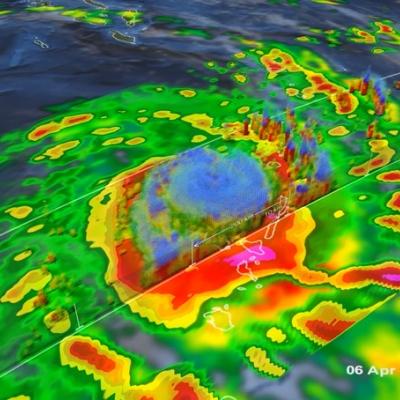How does GPM advance satellite estimates of precipitation?
GPM's predecessor the Tropical Rainfall Measuring Mission (TRMM) measured heavy to moderate rain over tropical and subtropical oceans. GPM provides advanced measurements, including coverage over medium to high latitudes, improved estimates of light rain and snowfall, advanced estimates over land and ocean, and coordination of radar and radiometer (passive and active microwave) retrievals to unify and refine precipitation estimates from a constellation of research and operational satellites. GPM also provides more frequent observations, every 3 hours.
Learn more:




